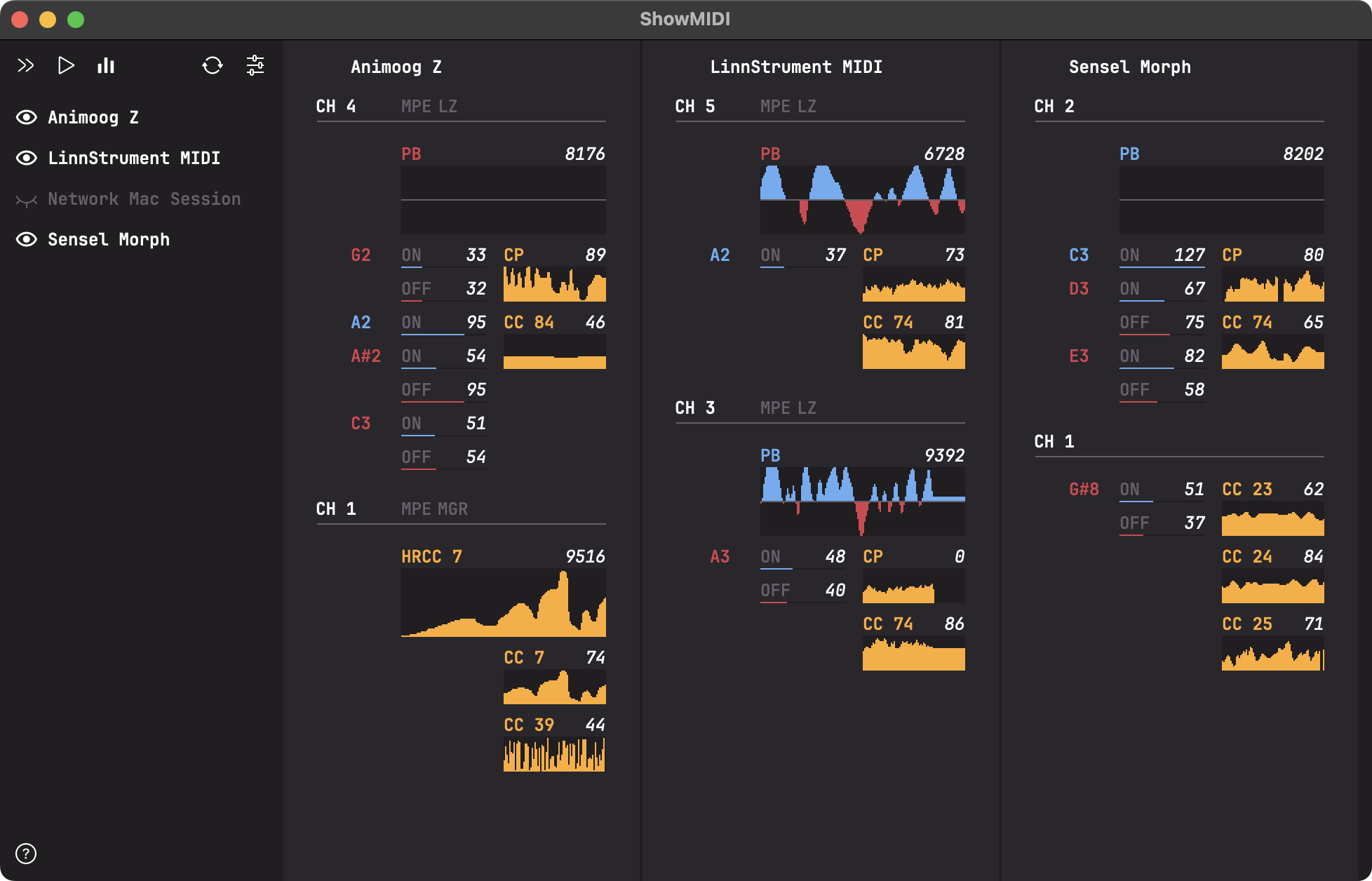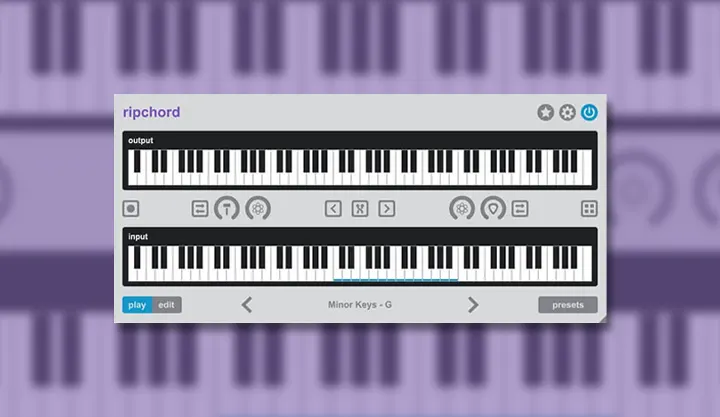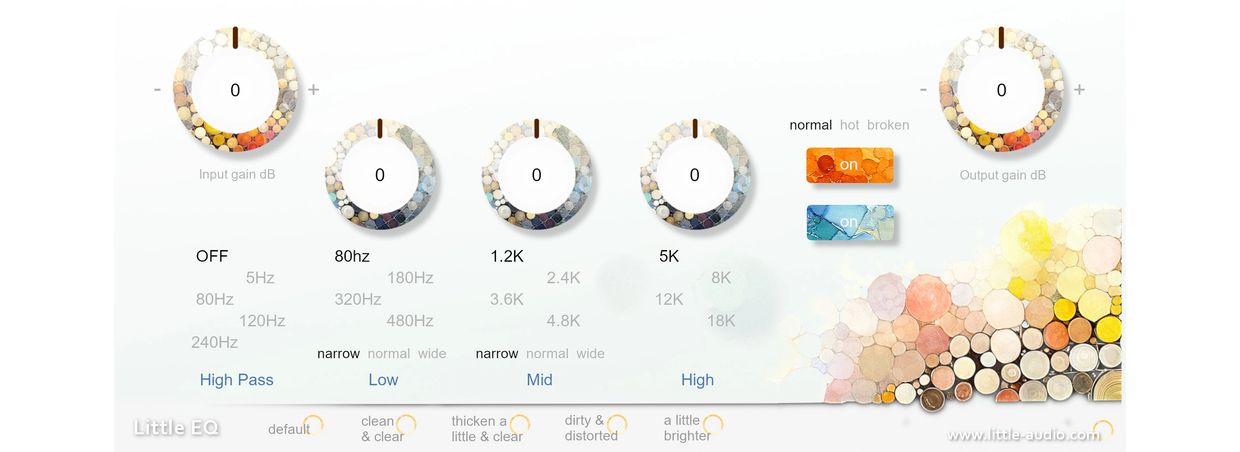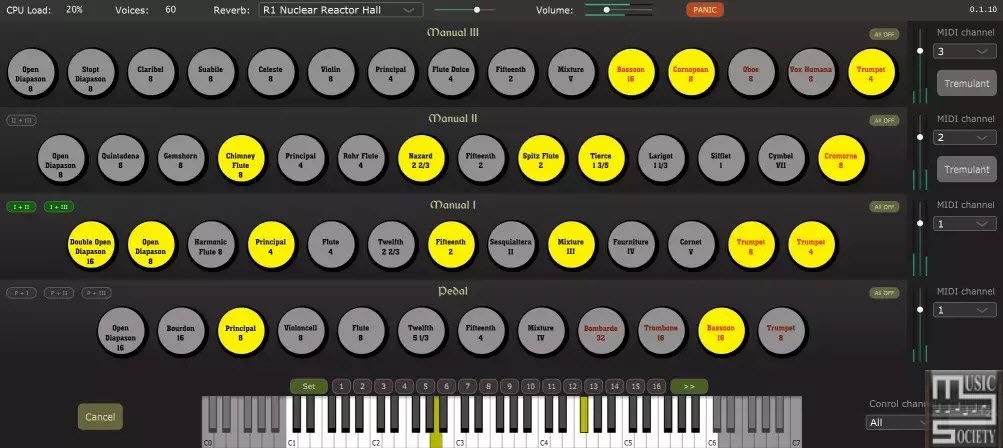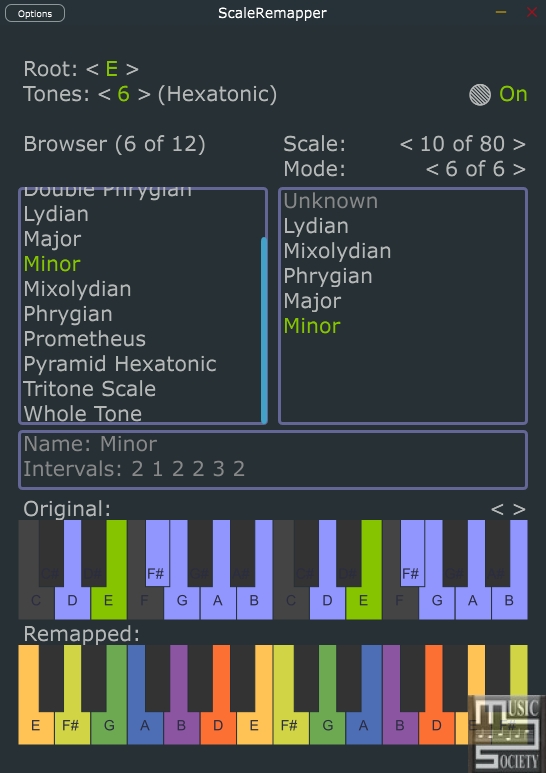domingo, novembro 17, 2024
MIDIOX: bom, bonito... e de graça!
Mais um freebie de Musicando - VYNIL DRUMS
VYNIL DRUMS: a simple Dance Funky drums for Kontakt.
Suport me using usersdrive links! Thanks!
quarta-feira, novembro 13, 2024
Polarity Audio Reverb And Delay Calculator (Inside Your DAW) v1.0.0 VST3 AU WiN MAC [FREE]
Reverb & Delay Calculator calculating reverb & delay calculations and even release time usage. With the Synchronized with DAW feature , you can simply load any Stereo Insert and the calculation results will appear immediately.
Product Features
- Synchronized with DAW
- Automatic Calculation
-Simple & Easy to use
Windows 7, 8, 10 (latest update) or later MacOS 10.12, 10.13, 10,14 or 10.15 (latest update), i5
4GB RAM minimum (8GB+ recommended)
1GB minimum free hard drive space
1920 x 1080 pixel screen resolution (recommended)
Supported Plugin Format
VST3, AU
https://usersdrive.com/w6765fqvc0xm.html
https://polarityaudio.com/product/reverb-delay-calculator/
Suport me, use usersdrive links please!
Uwyn ShowMIDI (MiDi Activity Monitor Plugin) v1.0.1
ShowMIDI is a multi-platform GUI application to effortlessly visualize MIDI activity. This application fills a void in the available MIDI monitoring solutions.
Instead of wading through logs of MIDI messages to correlate relevant ones and identify what is happening, ShowMIDI visualizes the current activity and hides what you don't care about anymore. It provides you with a real-time glanceable view of all MIDI activity on your computer.
Uwyn ShowMIDI (MiDi Activity Monitor Plugin) v1.0.1 VST VST3 AU CLAP LV2 STANDALONE LiNUX WiN MAC [FREE] screenshot
Usage:
To use it, simply double-click the application to launch it.
To pause the MIDI data stream, press the spacebar, to un-pause, press it again.
The plugin versions can be used in any DAW that supports MIDI effect plugins. Some plugin formats, like VST3, might filter out certain MIDI messages and not present a fully accurate view.
This application fills a void in the available MIDI monitoring solutions.
Instead of wading through logs of MIDI messages to correlate relevant ones and identify what is happening, ShowMIDI visualizes the current activity and hides what you don't care about anymore. It provides you with a real-time glanceable view of all MIDI activity on your computer.
https://usersdrive.com/d2ze2j94znjl.html
https://github.com/gbevin/ShowMIDI
Suport me, use usersdrive links please!
terça-feira, novembro 12, 2024
Cab Lab 4 Powerful IR Mixer and Tools – Now FREE!
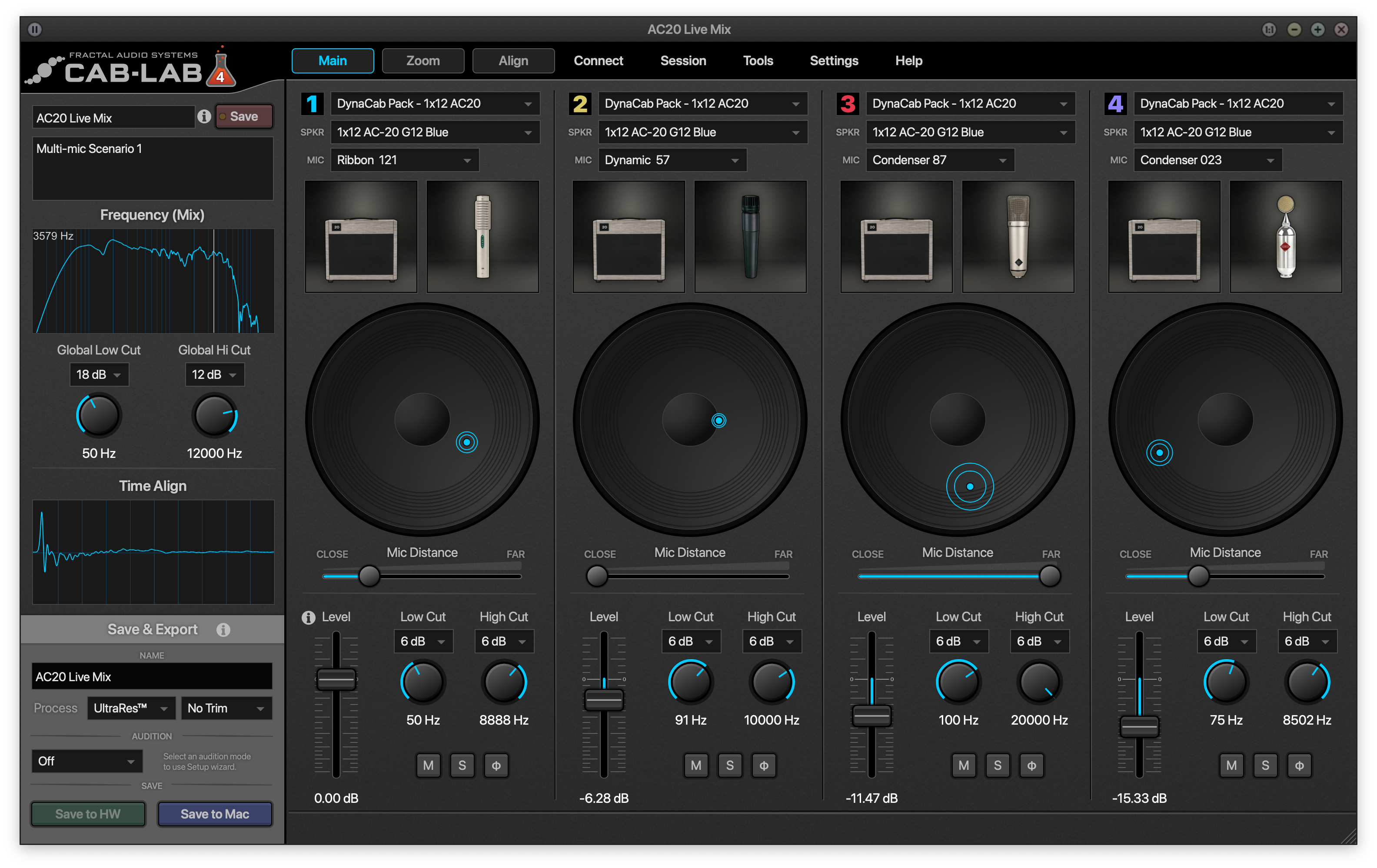
domingo, novembro 10, 2024
Semana do MIDI: Ripchord is a free MIDI plugin for creating and remixing chord progressions.
The MIDI Association MIDI 2.0 Specifications (Complete) PDF [FREE]
- MIDI 2.0 Specification Overview
- MIDI Capability Inquiry (MIDI-CI)
- Common Rules for MIDI-CI Profiles
- Common Rules for MIDI-CI Property Exchange
- Universal MIDI Packet (UMP) Format an MIDI 2.0 Protocol
- MIDI Clip File Specification (SMF format for UMP)
sexta-feira, novembro 08, 2024
Uma prenda (gift) para os leitores do Musicando!
quarta-feira, novembro 06, 2024
terça-feira, novembro 05, 2024
Arthur Benilov Aeolus (Pipe Organ Synthesizer) v0.2.0 x64 VSTI VSTI3 AU Standalone Windows MacOS Linux [FREE]
This project leverages the wavetable systhesis part of the original Aeolus, improves on it, and delivers it as a standard VST plugin using JUCE framework, so that it can be run in Windows/macOS VST3/AU hosts.
This implementation contains additional improvements to the sound generation including:
- Pipe models can be composed of multiple pipes (to create proper mixtures);
- Different pipe models can be used across the keyboard compass (this enables mixtures breaking-back);
- Pipes chiff noise is played on attack;
- The plugin uses zero delay convolutional reverb with selectable IRs from OpenAir library;
- Registration presets also act as a sequencer.
- pipes chiff noise on attack;
- new pipe models;
- convolutional reverb.
The original binary format for the pipe models and the organ configuration has been translated (partially) to JSON.
MIDI Control:
Sequencer steps are controlled via the program change messages sent on the control MIDI channel (program 0 corresponds to the first step of the sequencer, 1 – to the second and so on).
In a DAW you may use Program parameter to control the sequencer steps. Another way to control the sequencer is via key switches (MIDI notes). The default configuration uses keys 22 and 23 to control the sequencer.
CCs:
CC 1 modulation wheel enables/disables tremulant
CC 7 controls the global volume (on the control MIDI channel) and the volume of each division which has swell config flag enabled (on the swell MIDI channel)
CC 91 controls the reverb output level
CC 98 Stops control
👉 The stops control follows the original Aeolus convention. The control mode is set by the message 01mm0ggg, where mm is the control mode, and ggg is the control group (division number, counter from the top starting from 0). Control modes are:
00 Disable the division (all stops are off)
01 Set stop off
10 Set stop on
11 Toggle
Once the control message is received the value of the format 000bbbbb will execute the selected control mode action on specified stop buton bbbbb, counted from 0.
Custom organ configuration:
Custom organ configuration will be loaded by the plugin if found at Documents/Aeolus/organ_config.json location.
👉 The Documents folder’s exact location depends on the operating system and the user profile.
To create the organ_config.json start with default one embedded into the plugin by copying it to Documents/Aeolus folder and renaming to organ_config.json.
It is also possible to use custom pipe configs in .ae0 or .json format. These have to be placed to the Documents/Aeolus folder for then can be referenced from the organ_config.json (use pipe file name without the extension in the“pipe“attribute of the organ_config.json).
Multibus output:
When compiled with the WITH_MULTIBUS_OUTPUT CMake option enabled, the generated plugin will ouput to the 8 separate monofonic buses. Each bus corresponds to the pipes groups placement in space according to the internal horizontal arrangement of the pipes.
In multibus configuration there is no reverb applied, and there is no spatialization performed.
👉 The multibus mode is indended for the object based mixing, where you could place individual pipe groups in space yourself and apply a reverb of your preference.
Pipes are arranged starting from the lowest key from the sides (buses 0 and 7) to the center in the middle of the range (buses 3, 4), and then going back from the centre towards the sides. For the pedal pipes, they go from the outside towards the centre only.
Corresponding pipe position jumps between left and right following the keys (C will be on the left, C# on the right, D of the left, D# on the right and so on).
👉 This very same pipes spatial arrangement is used in the stereo version of the plugin to perform spatialized rendering followed by a stereo convolutional reverb.
https://github.com/Archie3d/aeolus_plugin?tab=readme-ov-file
Xivilay ScaleRemapper v0.7.6 Standalone VST3 AU LV2 Win MacOS Linux iOS [FREE]
Routes white keys from midi-input to chosen scale to midi output
Midi only plugin. Remaps white keys of the standard midi-keyboard to any possible music scale.
Haze Plugin
Drift Into the Blur Haze is a silky smooth chorus and phase effect. Blending rich chorus, dreamy phasing, and lush algorithmic reverbs wit...

-
Violin One – The Power of Physical Modeling Violin One is a free virtual instrument that takes a completely new path. Unlike the Hybrid Mo...
-
Podolski Created in 2005 and still going strong. Podolski is a free, straightforward, CPU-efficient virtual analogue synthesizer. One osci...



